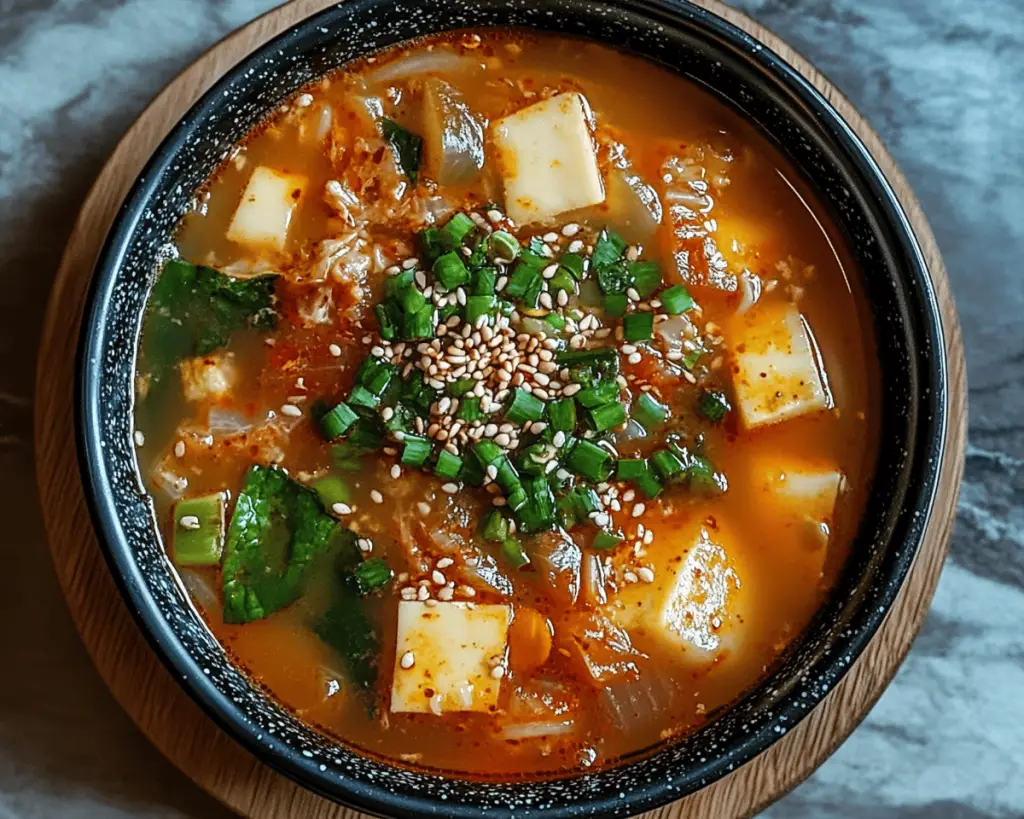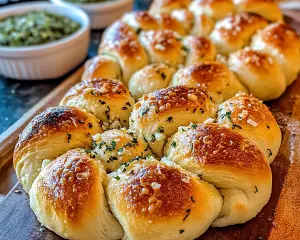As winter descends, it brings with it a chilly embrace, one that settles deep in my bones and calls forth the comfort of warm, nourishing meals. There’s something profoundly intimate about cooking during these colder months—perhaps it’s the way the snow paints the world in muted colors or how the flicker of a candlelight dances, casting soft shadows against the kitchen walls. It is during these moments that I often find myself yearning for a bowl of warmth that whispers of home, tradition, and comfort.
For me, nothing speaks to these feelings quite like a steaming bowl of *seolleongtang*, a traditional Korean ox bone soup. This recipe is more than just a dish; it’s a memory-laden treasure of my childhood, rich with the aromas and flavors that filled the home of my grandmother. She would open the doors to her tiny kitchen, where the smell of simmering bones and fragrant herbs fused together like a warm embrace.
In my mind’s eye, I can still see her stirring the pot, her hands expertly guiding the wooden spoon as she hummed tunes that wrapped around me like winter scarves. The rice would bubble softly in another pot, and the room would be scattered with laughter and stories—even my young self, holding onto the trivialities of my day, felt that those little moments were monumental in their connection to family and culture. Each bowl of *seolleongtang* had its own story, its own warmth, and each was savored with a heart full of love and gratitude.
As I prepare to create this rendition of the winter soup, I cannot help but feel a sense of nostalgia; an emotional blanket that weighs lightly over my shoulders and elevates the simple act of cooking into something so rich and profound. I invite you to join me in a journey filled with flavors and memories, where each ingredient plays a pivotal role in keeping that warmth alive.
Behind Every Ingredient
In seeking the essence of *seolleongtang*, the ingredients are far more than simple culinary components; they are echoes of family gatherings and delightful conversations. Let’s take a moment to weave through each one, letting the memories unfold.
– Ox Bone: The very heart of this dish, *seolleongtang* is all about its rich, flavorful broth, and nothing achieves that quite like ox bones. I remember the first time I witnessed my grandmother selecting the bones at the market—her eyes shone with purpose. She chose bones with marrow and collagen, knowing they would yield a rich broth with a depth of flavor that warms not just the body but the soul.
– Water: The simplest of all ingredients, yet essential in transforming the bones into something magical. The water carries warmth and compassion as it threads through the simmering bones, drawing out their rich essence, echoing the way family connections deepen with time.
– Soy Sauce: A swirl of umami and saltiness, soy sauce adds a whisper of savory delight that harmonizes perfectly with the subtle flavors of the soup. I think back to the experiments my grandmother conducted, adjusting the splash of soy sauce until it felt just right—a talisman of balance. In my own kitchen, I can hear her counsel echoing: “Taste. Always taste.”
– Garlic: With its pungent aroma, garlic evokes memories of chopping and sizzles. Grandma patiently instructed me in the art of crushing it just right, assuring me that no dish would be complete without its warm embrace. Garlic not only sings to the other ingredients but also brings its own little accent of health.
– Salt: Essential to every dish, salt in *seolleongtang* serves a dual purpose—balancing flavors and enhancing the umami notes within the broth. I think of the careful adjustments, the gentle pinches passed between my grandmother’s fingers as she tasted and refined; it was as if she were weaving a spell with each scoop.
– Rice: Traditionally served alongside the soup, the rice transforms each spoonful into a well-rounded meal. It was customary in our household for family members to enjoy this bowl as if they were gathering around the table of togetherness. Whether plain or a little seasoned, each bite of rice became a vessel, a partner for the soup—a reminder that comfort often exists in sharing a meal.
– Green Onions: A sprinkle of fresh green onions adds a crisp, refreshing bite to the warmth of the broth. They evoke memories of spring, even in the heart of winter, reminding me of renewal and growth. Each chop is a testament to the vibrant life found even in the coldest of months.
– Ground Black Pepper: The final touch that adds warmth and depth. I remember my grandmother laughing whenever I went a bit too heavy with the pepper, her eyes sparkling with the knowledge that just the right amount could elevate the entire dish. It’s a spice that embodies the warmth of not just flavors, but love.
Comfort Meets Care: Is It Healthy?
As we break down the composition of *seolleongtang*, it’s essential to reflect on its health perspective. This dish carries a reputation as being both comforting and nourishing; a balance of indulgence and care. The warmth of *seolleongtang* comes from its hearty broth, full of nutrients gleaned from simmering bones.
The *ox bone* soup is rich in collagen which is beneficial for joints and skin, something my grandmother always emphasized. She would speak about how this comforting soup served to mend not just physical ailments but emotional ones too. When I prepare this dish, I can’t help but feel the same healing forces flowing through my fingertips as I stir the pot.
The addition of *garlic* not only enhances the flavors but also gives it anti-inflammatory properties, while the humble *green onions* carry a wealth of vitamins and nutrients to invigorate. As I serve a bowl, I feel a sense of balance—each spoonful holds warmth, love, and the promise of nourishment. Unfortunately, the soy sauce and salt can add sodium, so I endeavor to create a natural balance; perhaps a lighter splash here and a dash of care there.
In all this, I remember that life is not only about perfection but about balance. It’s okay to indulge in comfort foods, especially those that remind us of cherished memories. So while I might consider it indulgent, I also embrace the notion that moments shared and flavors cherished should be experienced with heart—balance often comes from not just the ingredients we choose but also from how we enjoy them together, in the warmth of family gatherings.
Ingredients for Easy Korean Winter Soup
– 2 lbs ox bones
– 10 cups water
– 3 tablespoons soy sauce (optional, to enhance flavor)
– 6 cloves garlic, peeled and smashed
– Salt, to taste
– Cooked rice, for serving
– 2 green onions, chopped (for garnish)
– Ground black pepper, to taste
Here’s How I Make It
1. **Gathering the Ingredients**
I start with a calming ritual each time I prepare *seolleongtang*. I gather the bones, each one slightly uneven and rough, their textures telling stories not yet spoken. As I set them down on the kitchen counter, I can almost hear my grandmother’s voice reminding me to treat them with care and respect.
2. **Rinsing the Bones**
I place the bones in a large bowl and cover them with cold water. As I swish them about, I can feel a chill in my fingers – it reminds me of icy winter mornings spent wrapping my hands around a warm mug. I let them soak for about thirty minutes to remove any impurities, noticing the small bits of debris swirling around in the water. When I’m satisfied, I drain them, thoughtfully discarding the murky water—a small cleansing ritual.
3. **Simmering the Bones**
In a large pot, I add the cleaned bones and pour in ten cups of fresh water. As I bring it all to a gentle boil, an underlying sense of anticipation builds within me. The steam dances up toward my face, bringing a fragrant hint of possibilities. I adjust the heat to let the pot simmer, moving into the comforting movements of stirring occasionally.
4. **Infusing Flavors**
When the broth begins to bubble softly, I toss in the smashed garlic cloves and watch as they float gracefully, imparting their aroma. There’s something hypnotic about the rolling boil—a kind of meditation. I remind myself to taste the broth along the way, noting how the flavors develop.
5. **Simmering Further**
I allow the broth to simmer gently for a few hours, at least two. This is my favorite part—pausing to breathe in the fragrant aroma as it fills the kitchen, lingering in the air like a warm hug. I remind myself of the memories of bustling family meals and laughter echoing through the walls of our home.
6. **Seasoning with Care**
As the time draws near, I sprinkle in a touch of salt, a whisper of soy sauce, if I choose, being careful not to overwhelm the delicate balance. Each taste is a connection to the past, and each sip is a promise for the future. The broth should be light yet flavorful, allowing the richness of the bones and garlic to shine through.
7. **Serving the Soup**
With a flourish, I prepare the rice and as it steams, the anticipation builds. I ladle the broth into warm bowls, letting the inviting aroma envelope me. I sprinkle chopped green onions on top, watching them dance lightly on the surface. Finally, a few twists of black pepper grace the bowls—just enough for a gentle kick.
8. **Gathering Around the Table**
There’s an unmistakable joy to gathering everyone in the kitchen for a shared meal. I serve the soup alongside the rice, a reminder of the togetherness I have always cherished.
9. **Savoring Each Bite**
With every sip, the warmth fills not just my belly but my heart as well. As I gaze into the bowl, I can almost hear the echoes of my grandmother’s laughter and feel the love woven into each ingredient. It’s a dish that reminds me of the legacy of warmth and comfort handed down through generations.
My Little Secrets
When I prepare *seolleongtang*, I often enjoy adding a small twist of my own—sometimes I’ll throw in a small piece of ginger during the simmering phase for an extra zing of warmth. Other times, I’ve experimented with different types of greens along with the green onions, like bok choy or spinach, giving a splash of color and nutrition. The variations serve as a reminder that even cherished traditions can evolve, breathing new life into familiar comforts.
As for plating, there’s something charming about using my grandmother’s old porcelain bowls. Their delicate patterns hold memories, like echoes of laughter and warmth, each bowl telling a story of its own. I also believe that each meal should be accompanied by a few chopsticks and some extra chili paste for those who crave a little kick—a fulfilling touch that brings friends and family together.
A Closing Thought
Through each bite of *seolleongtang*, I find the connection to my past—the lingering warmth, the echo of laughter haunting the hallways of my memories. This dish transcends mere sustenance; it’s intimacy captured in broth, a link that ties me to my grandmother who once nourished my soul with such simplicity. As I sit around the table, sharing stories with loved ones surrounded by laughter and warmth, I recognize that food keeps memories alive, offering moments that connect us through generations, the ordinary effortlessly transformed into the extraordinary. Each time I prepare this soup, I am seamlessly drawn into the intricate dance between time and memory—a gentle reminder that love is the key ingredient in life’s most cherished recipes.



